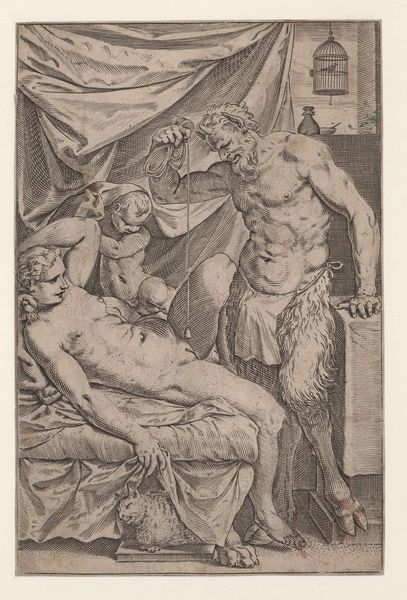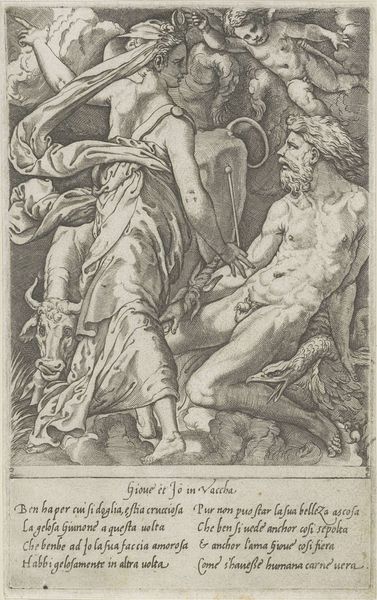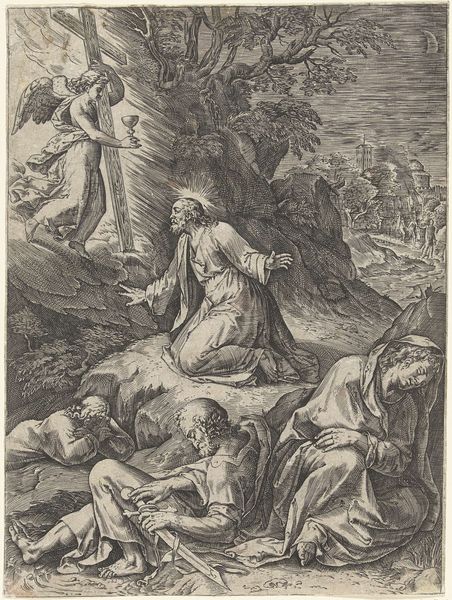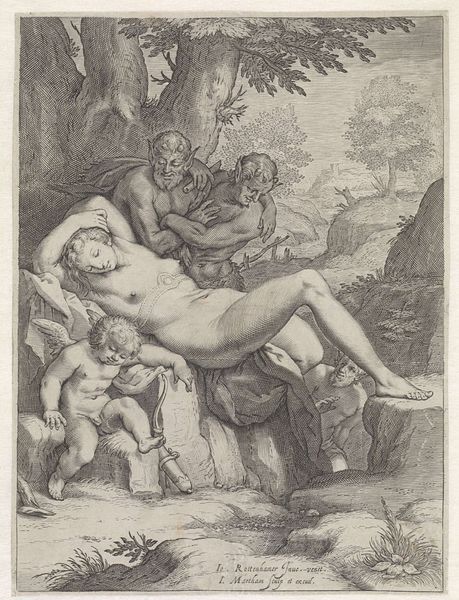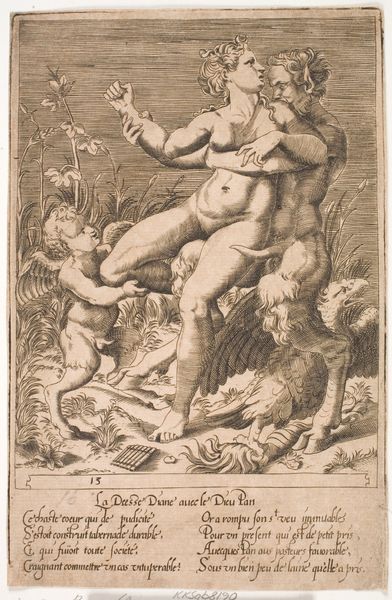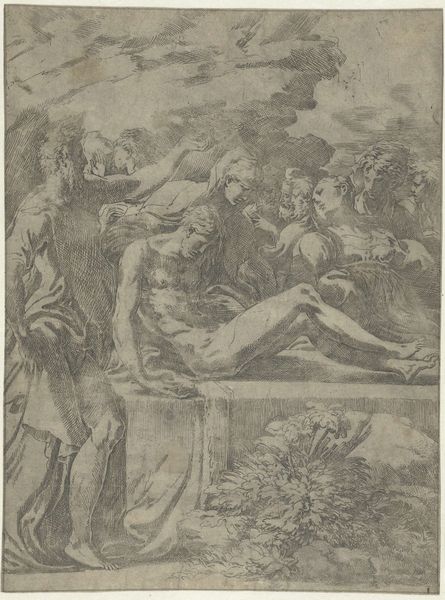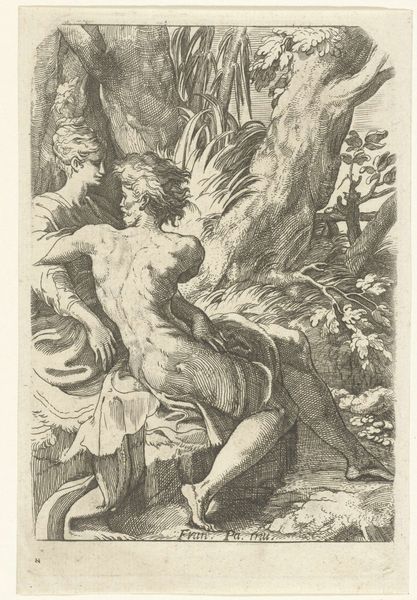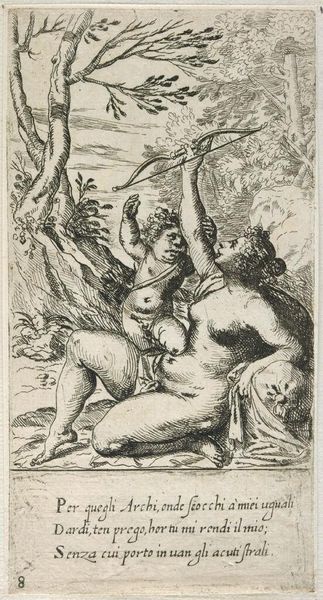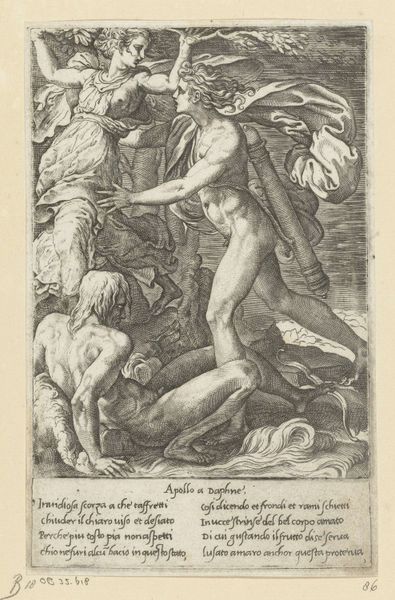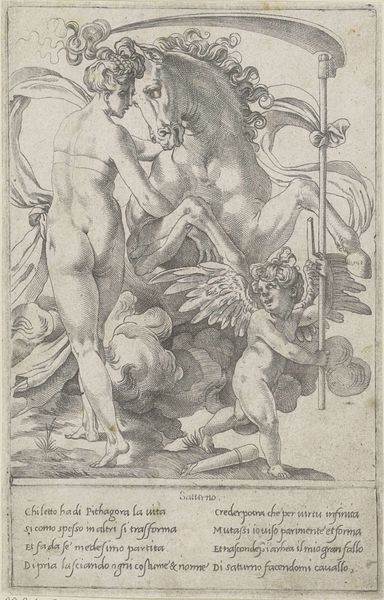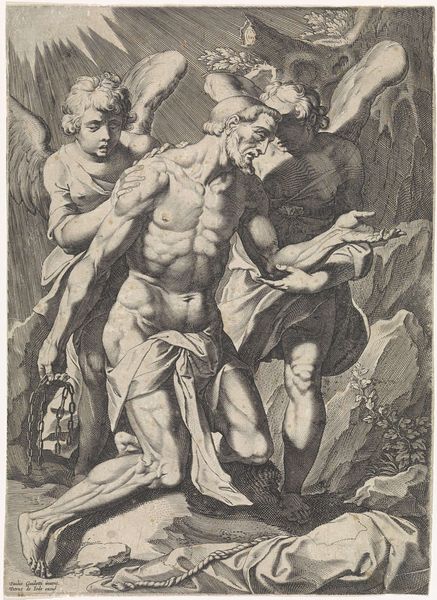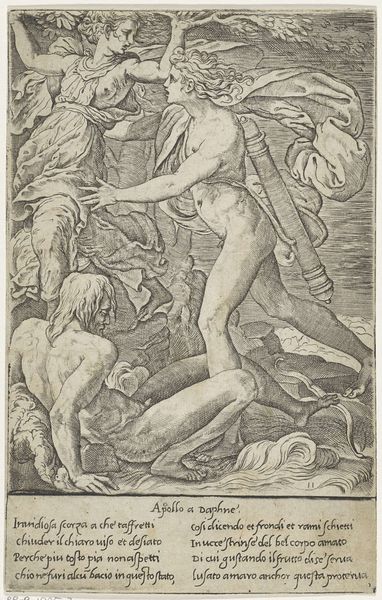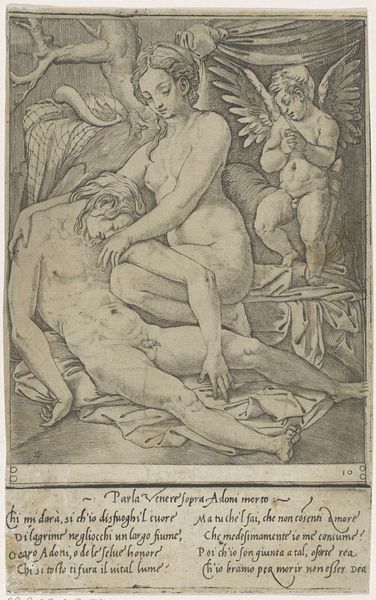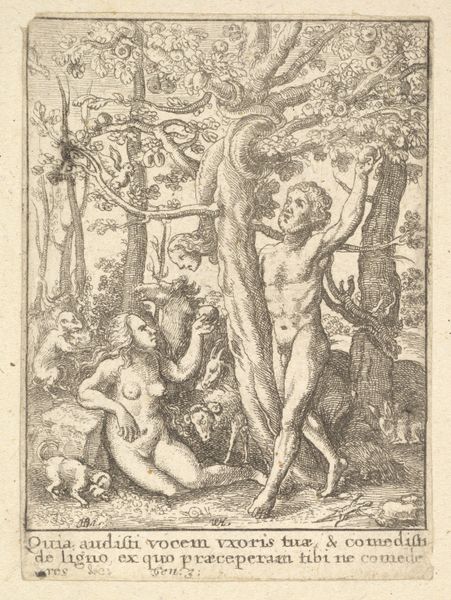
print, etching
allegory
etching
mannerism
pencil drawing
genre-painting
nude
Dimensions: height 153 mm, width 117 mm
Copyright: Rijks Museum: Open Domain
Curator: Looking at Agostino Carracci's "Satyr Spying on a Sleeping Nymph," created around 1590-1595, what's your immediate take? Editor: My first thought is discomfort. There’s a real power imbalance rendered in these delicate etching lines, a violation of privacy playing out against a deceptively idyllic landscape. Curator: It's certainly charged. Carracci, working in the Mannerist style, draws heavily from classical mythology. The satyr, traditionally a symbol of base instincts, represents unrestrained desire, while the nymph embodies idealized feminine beauty and vulnerability. These characters carry weight. Editor: And the weight lands squarely on her, doesn't it? The scene reads as a cautionary tale, speaking to the vulnerability of women to male predation. I am immediately reflecting on the history of art being in conversation with how women's bodies were commodified in visual culture, particularly from a male gaze. Curator: Absolutely. But is it *just* a tale of vulnerability? Satyrs also represent the wild, untamed aspects of nature. Perhaps Carracci is exploring the tension between the rational, civilized world (implied by the observing viewer) and the instinctual, primal drives that exist just beneath the surface. The nymph sleeping, unknowing of the dangers present around her... it suggests innocence. Editor: I see that, but it is still impossible to overlook the problematic narrative being perpetuated by the male gaze. It echoes even contemporary cultural conversations surrounding consent and bodily autonomy. This complicates the aesthetic appreciation of what is technically skillful etching. How can we engage with these artworks critically? Curator: By acknowledging those inherent tensions! Visual art becomes richer when we are asking what cultural memories the image preserves for us. Editor: I think that’s key here. This etching really sparks a conversation that bridges art history with today’s sociopolitical landscape. The ripples that visual stories create... that's what lasts.
Comments
No comments
Be the first to comment and join the conversation on the ultimate creative platform.
